Premi “Eduard Bertran i Rubio”
La Societat Catalana de Neurologia ha atorgat el Premi “Eduard Bertran i Rubio” a l’excel·lència en la trajectòria professional i acadèmica en el camp de la Neurologia, en la seva edició de 2025, al professor Xavier Navarro Acebes.
L’entrega del Premi es va efectuar el 8 de maig de 2025, en el marc de la XXIXReunió Anual de la Societat Catalana de Neurologia, al World Trade Center de Barcelona.
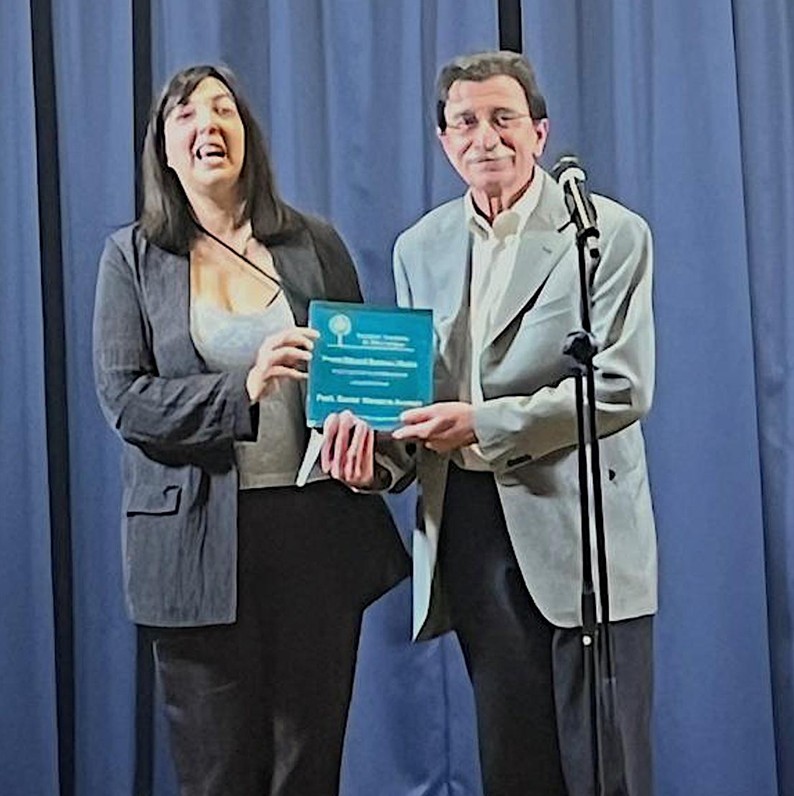

Un nou fàrmac experimental millora la funció motora i prolonga la vida en un model d’ELA
Un estudi col·laboratiu amb participació de la UAB ha mostrat la capacitat de la molècula MP-010 de millorar la funció motora i prolongar l’esperança de vida en un model de ratolí d’Esclerosi Lateral Amiotròfica (ELA), una malaltia neurodegenerativa greu sense tractaments efectius.
https://www.uab.cat/web/sala-de-premsa/detall-noticia/un-nou-farmac-experimental-millora-la-funcio-motora-i-prolonga-la-vida-en-un-model-d-ela-1345829508832.html?detid=1345952720286: BlogBioFINE project meeting at UAB
The members of the BioFINE project, acronym for BioFunctional IntraNeural Electrodes, funded by the European Innovation Council within the HORIZON-EIC-2022-PATHFINDEROPEN program, met at the Faculty of Medicine of the UAB, last March 27-28, 2025.
In the meeting, the partner teams, of Chalmers Technology University, University of Friburg, Università de Ferrara and UAB, presented the research developed during the first two years of the project, and planned the collaborative activities for the final period.
The ultimate goal of BioFINE is to investigate and produce a combined approach to bridge the gap from electrodes to nerves and generate long term functional nerve interfaces that can benefit patients affected by amputations and severe neural injuries.

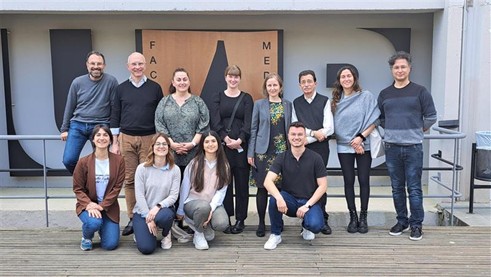
DIPOLE project starts
February 20th, 2025 we had the first Kick-Off meeting of the DIPOLE project, a collaboration of the company StereoDive Medical with the Instituto Hospital del Mar de Investigaciones Médicas (IMIM) and Universitat Autònoma de Barcelona, supported by the Public-Private Collaboration Projects – 2023 Call.
This is the beginning of an innovative partnership to explore and fully develop the potential of the stereoDiver platform for the surgical planning of stereoencephalography (sEEG), as well as its potential applications in therapeutic surgical interventions for epilepsy. Ignacio Delgado is the local PI of the UAB
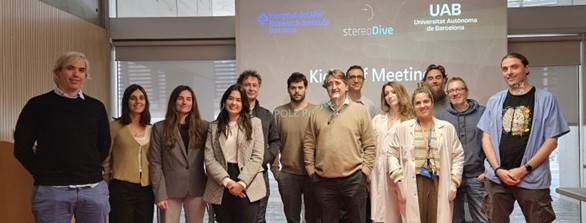
La convocatòria Proof of Concept de la UAB accelerarà tres projectes de recerca
Els ajuts Proof of Concept són una convocatòria pròpia de la UAB que tenen l’objectiu d’accelerar la transferència de coneixement dels grups de recerca de la Universitat a través d’estudis que permetin avançar en la maduració dels resultats de recerca que es volen transferir. En la darrera edició, tres projectes han estat seleccionats. Entre aquests, el NERO-ALS: Neuroresolving Therapeutics: Developing Innovative Treatments to Combat Neuroinflammation in Degenerative Diseases with a Focus on ALS del Dr Rubèn Lopez-Vales, investigador del Grup de Neuroplasticitat i Regeneració del Departament de Biologia Cel·lular, de Fisiologia i d’Immunologia i de l’Institut de Neurociències.
Link Notícia UAB
EGNITE based electrodes for stimulation and recording in the nervous system
A study published in Nature Nanotechnology presents an innovative graphene-based neurotechnology, named EGNITE, for developing thin-film electrodes with enhanced capabilitites. This research, spearheaded by the Catalan Institute of Nanoscience and Nanotechnology (ICN2) together with the Universitat Autònoma de Barcelona (UAB) and other national and international partners, has been developed in part with the support of GRAFIN and RESCUEGRAPH projects.
https://doi.org/10.1038/s41565-023-01570-5
Figure: EGNITE electrode for peripheral nerve.

BioFINE project starts
After traumatic limb loss, electrically innervated bionic limbs help patients to gain independence and improve their quality of life beyond what is possible with more conventional prostheses. However, their insufficient long-term integration with the patient’s own nervous system is a remaining barrier to broader clinical use. The astonishing potential of bionics to use finer details in nerve signaling patterns for limb control, or to provide bionic limbs with artificial sensory function, can only truly come to patient benefit when this performance remains over many years.
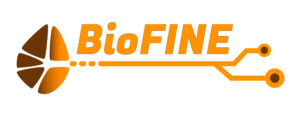
The BioFINE project, acronym for BioFunctional IntraNeural Electrodes, funded by the European Innovation Council within the HORIZON-EIC-2022-PATHFINDEROPEN program, aims to enhance biocompatibility of intraneural electrodes for bionic limbs as a multi-dimensional chemical-engineering challenge. New micro- and nanofabrication processes will shape implants and interconnections with individual features below one micron, making it possible to greatly reduce the impact these implants have on the surrounding tissue. Notably we will not need to reduce electrical functionality but on the contrary add more electrodes for even better interfacing of the intraneural space. To further enhance tissue integration, our implants will be dressed in bio-functional coatings that release anti-inflammatory drugs or act as biomimetic interfaces to improve cell-surface interaction. Our long-term vision is to develop the first intraneural high channel-count interface capable of harvesting/injecting signals for motor control and sensory feedback to prosthetic limbs while designed to operate over decades.
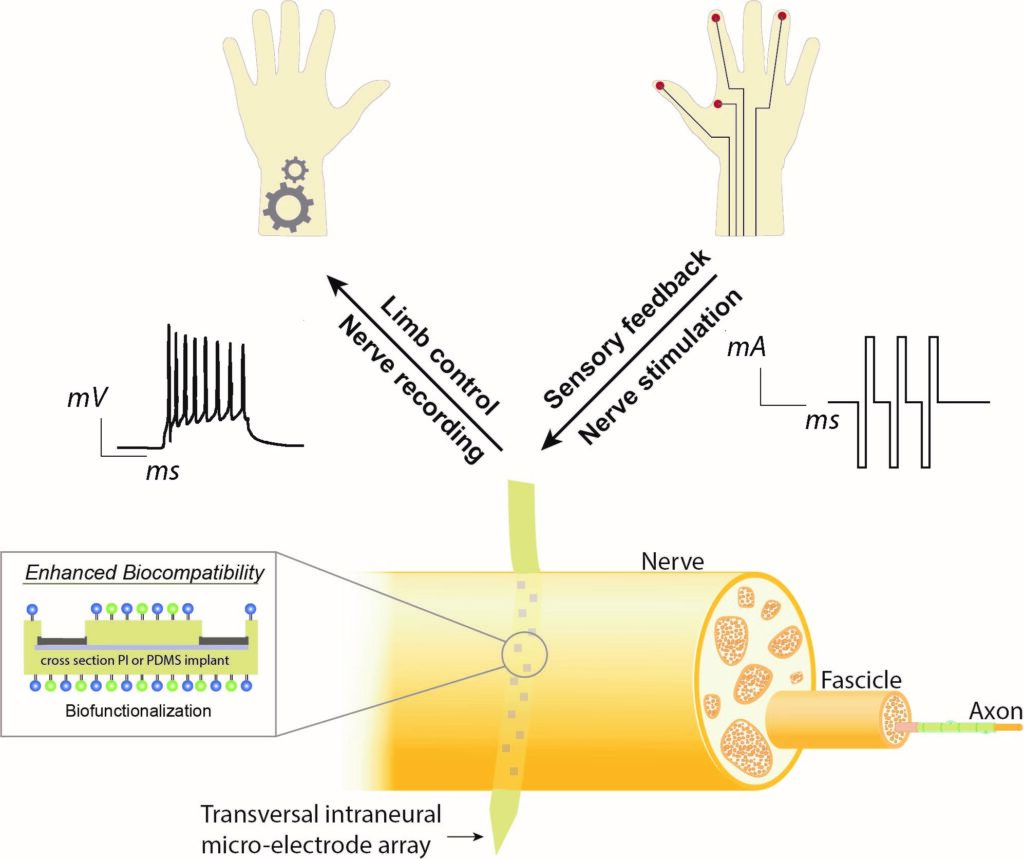
The BioFINE project started 1st of April 2023 and rely on close interaction between scientists working at University of Freiburg and Chalmers University of Technology developing the implants, University of Ferrara developing new methodology for implant biofunctionalization and the Universitat Autònoma de Barcelona analyzing the effect of these new implant concepts on the performance in the nerve. The Group of Neuroplasticity and Regeneration of the UAB, led by Prof. Xavier Navarro, will lead the validation of the new interface system in vivo. The ultimate goal is to have a combined approach to bridge the gap from electrodes to nerves and generate a long term functional peripheral nerve interface that can benefit patients long term.

FLAG-ERA funds ten new projects on graphene research and applications
RESCUEGRAPH. Led by the Group de Neuroplasticity and Regeneration of the Universitat Autònoma de Barcelona, Spain, this project will develop graphene-based neural interfaces. These devices will play a key role in rehabilitation therapies, offering new opportunities to restore lost sensory and motor functions caused by spinal cord injuries. The properties of graphene enable flexible and precise electrodes for brain stimulation, which drives rehabilitation through neuroplasticity.


The SOMA project starts
The SOMA project, led by Prof. Loredana Zollo, of the Università Campus Bio-Medico di Roma (UCBM), and funded by the European Commission within the H2020-FETOPEN-2018-2020 programme (https://cordis.europa.eu/project/id/899822), gets into the thick of things. A highly challenging study in the field of upper limb neuroprostheses: SOMA aims at developing novel low-invasive bidirectional interface based on ultrasound probes and algorithms enabling the decoding of muscular activity and the sensing of close-to-natural somatic sensations.
The first meeting between the 7 partners involved in the SOMA project took place on October 28th. An international network of partners collaborates to the project: Fraunhofer-Institut für Biomedizinische Technik will develop the ultrasound (US) probes, University College of London will develop the miniaturized electronics, Imperial College London will investigate the myoelectric control based on US recording of the prosthesis, Università di Napoli “Federico II” will develop an in vitro model of the muscles and of the somatosensory system for the experimental validation of the US interfaces, Universidad Autonoma de Barcelona will perform tests of biocompatibility and functionality on animal models, and Össur, a world leader company in the development of prostheses, will contribute to the development of the new SOMA prosthesis. The team of partners is coordinated by UCBM, who will also develop the instrumented hand prosthesis, the algorithms for encoding somatic sensations and the techniques for stimulating the PNS through ultrasound probes. The UAB team, led by Prof. Xavier Navarro, will lead the validation of the new interface system in vivo. The virtual kick-off meeting defined the first actions to achieve the ambitious objectives of the project: the prostheses will be able to feel and route back to the amputee tactile and thermal sensations, and also pain. To this purpose, SOMA will take advantage of the most advanced technology in the field of tissue engineering and neurocomputational modeling, integrated in a synergistic way with the most advanced technologies, hardware and software, in the field of neuroprostheses and implantable devices
